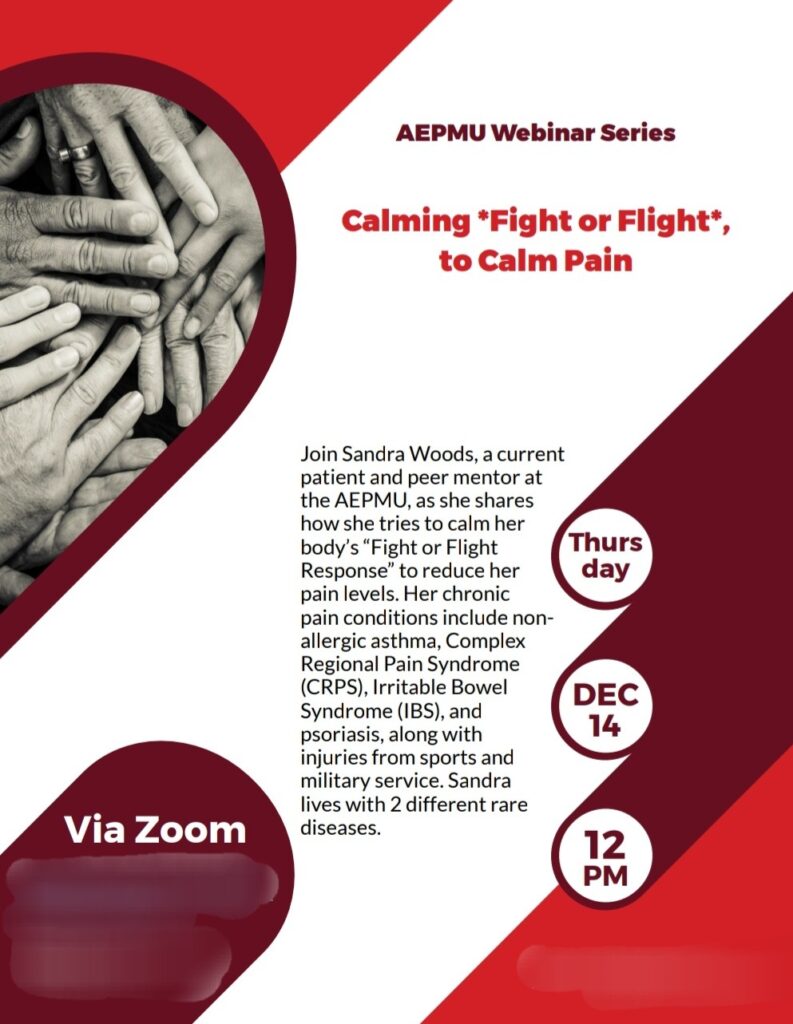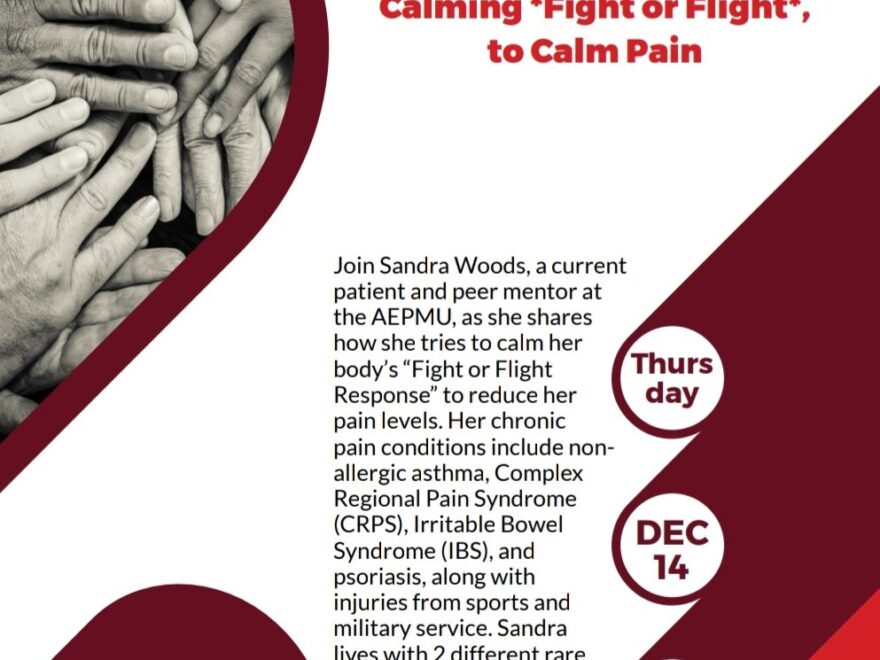There’s something coming up that’s art-related, but not in a way that you might expect. Next month I’ll be giving a presentation on the Limbic System and chronic pain at the McGill University Health Centre (MUHC) pain clinic here in Montréal. The Limbic System is the body’s “Fight or Flight” response to danger and stressors, and we all know that the holiday season can be a stressful time.
So I’ll be presenting many of the techniques and ‘tools’ that I use to try to calm my body’s stress response – because of my own high-impact chronic pain from Complex Regional Pain Syndrome (CRPS). Some of these ‘tools’, of course, involve art-creation and art-appreciation – because I began learning to paint and sketch in 2021 specifically because of my rare pain condition.
This is another example of how my Art Despite Pain [#ArtDespitePain] initiative combines my art practice with my volunteer chronic pain advocacy, awareness, and education activities. Unfortunately, this event is reserved for team members and patients of the MUHC’s pain clinic, the Alan Edwards Pain Management Unit (AEPMU) and the Chronic Pain Peer Mentorship Program (CPPMP, with which I’m a volunteer Mentor), so I’ve blurred the log-in information for this event on the hospital network’s poster.

Although most healthcare in Canada is publicly-funded through taxes, and is pretty much free when you need it, there’s a real lack of free patient-education initiatives. With our hospitals run as non-profit organizations, most simply have no funds for patient outreach and education. Often it’s folks like me, with a past career in healthcare (in my case, in bioethics), who are asked to give talks and lectures. I love giving presentations, so am always happy to volunteer for this.
This particular event will be based on a three-hour lecture that I gave, as a guest speaker for a university course, this past March. I’m already in the process of editing down my 3-hour talk to fit into a 50-minute presentation, with a 10-minute Q & A discussion at the end. It’s very challenging, but also interesting to make decisions about what I think is most important for other pain patients to know; what I would have wanted to know if I wasn’t already on this path. One thing is certain, that there will definitely be an emphasis on creative activities as tools for calming the limbic system, also called the body’s Stress Response or the Fight or Flight Response.
On that note, thanks so much for stopping by. Feel free to reach out or to leave a comment over on Instagram or Twitter; managing the Comments feature here on the blog got to be too overwhelming for my cognitive impairment, with all the spam coming in. But I do love to hear from you. Keep safe, stay well, and maybe try to do something creative today.

